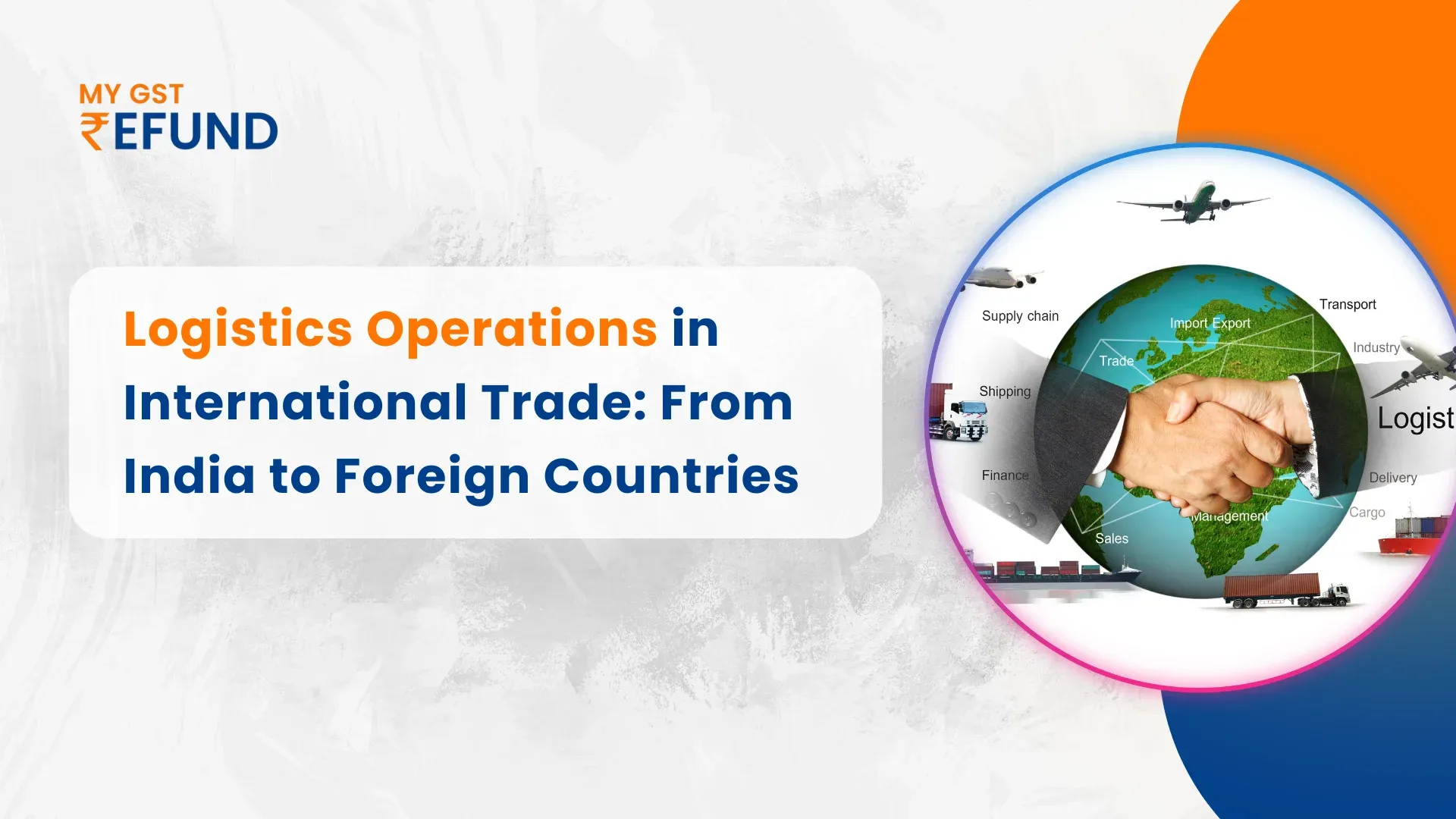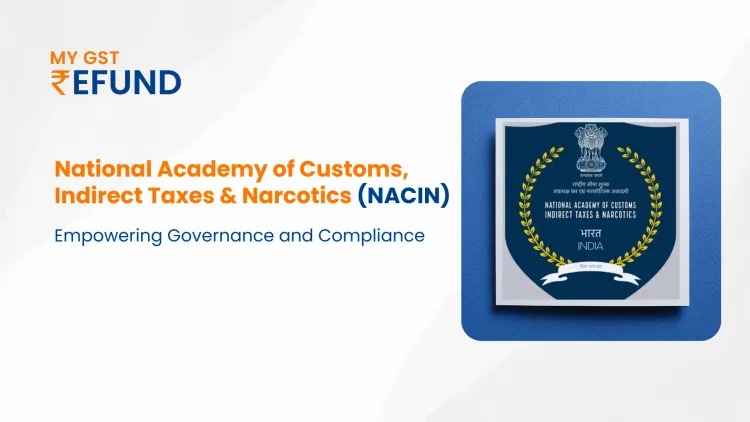Logistics Operations in International Trade: From India to Foreign Countries
International trade logistics consists of managing and coordinating the transportation and distribution of products starting from their original place in India until their final foreign destination. Logistics operations in international trade combine diverse transport systems with efficient resource handling, documentation practices, safe storage services, inventory management, customs collaboration, and regulatory compliance requirements.
The efficient operation of India's logistics infrastructure is essential for promoting easy international trade procedures. The Logistics Performance Index serves as a vital benchmark to assess the border portability of goods and to measure improvements in logistics systems for countries such as India.
Modes of Transport in International Trade
1. Land Transport (Road and Rail)
A. Road Transport
The roads in India extend throughout the country, bringing together significant cities with ports and border points. Road transport's primary purpose is limited to two functions: delivery within short distances and delivery of goods to nearby ports prior to sea transport. International trade relies heavily on the National Highways and Expressways for its successful expansion.
Advantages:
• Cost-effective for short distances
• Flexibility in routes
• Door-to-door delivery
Challenges:
• Congestion
• Poor Infrastructure in some regions
• Delays due to customs clearance at border points
1. Rail Transport
The extensive rail system across India mostly carries bulk materials, including coal, iron, and cement, over long periods. Such transport systems can frequently operate with multiple modes of transport.
Advantages:
Long-distance shipment of bulk goods proves economically beneficial when using this transport method.
Reliability in delivery times
Challenges:
The range of delivery that rail transportation achieves is comparatively smaller than that of road transport.
Infrastructure bottlenecks in border areas
2. Air Transport
Electronic devices, pharmaceuticals, and perishable goods are transported through airlines because they require both high value and fast delivery.
Advantages:
- Fast
- Secure and reliable
- Companies utilize this mode for their products when speedy delivery is essential.
Challenges:
- High costs
- Limited cargo capacity
- Dependence on the availability of airports and air freight services
3. Sea Transport
Large-volume international trade relies mostly on sea transport as its main transportation method. The global commercial shipping network connects to India through its major ports, located in Mumbai, Chennai, Kolkata, and Jawaharlal Nehru Port.
Advantages:
- Sending bulky commodities through maritime transport is economical for spreading large amounts of products.
- Capacity for containers and large cargo
Challenges:
- Slow transit time
- Weather conditions can lead to possible transportation delays during the export process.
- Congestion at major ports
- Dependency on port infrastructure
4.Multimodal Transport
Multimodal transport is transportation through multiple modes at once (a combination of road, rail, sea, and air transportation). This method creates greater efficiency and reduces expenses for extended transportation distances.
Advantages:
- Optimizes time and cost
- Reduces handling
- Different transport methods connect seamlessly through this system.
Challenges:
- Successful multi-oriented transport requires proper coordination between all organizations involved.
- Complexities in customs procedures
- Infrastructure limitations at intermodal hubs
Read More: How to Start an Import and Export Business in India
LPI Index and India's Position
The World Bank, through its Logistics Performance Index (LPI), evaluates national logistics capabilities by examining six important factors that encompass Infrastructure and international shipments, together with logistics competence, tracking and tracing, customs performance, and timeliness. The index assigns national rankings between 1 (the lowest quality) and 5 (the best quality).
India's LPI Position: India has made progress in LPI assessments recently. However, its infrastructure administration and customs control performance, and overall operational efficiency do not match those of mature countries.
India has demonstrated progress in LPI 2023, where it secured position number 44 compared to previous years. However, India's logistics efficiency trails that of Singapore, Japan, China, and several other Asian countries.
The Indian logistics system displays strengths in provider expertise and port and major city infrastructure quality, yet the tracking systems and customs clearance processes create substantial obstacles.
Read More: What is the Duty Drawback Scheme for export: Eligibility and Types
Logistics Infrastructure and Challenges
1. Ports and Shipping: India has enhanced its port infrastructure, even though major ports encounter major congestion problems. JNPT and Mumbai Port rank as central shipping locations, but their operations are frequently impaired because of increased trade volumes.
Challenges: Insufficient capacity in some ports, long container dwell times, inadequate warehousing, and congestion at port entry and exit points.
2. Rail and Road Infrastructure: Rail and road networks extend widely through India, although regional variations exist regarding their condition level and operational effectiveness.
Challenges: The rural areas' insufficient infrastructure leads to combined challenges with poor roads, non-integration of rail and road networks, and delays at border crossings.
3. Air Cargo: Although air cargo remains available, it faces restricted operational limits caused by India's reliance on main international airports for services.
Challenges: Limited Infrastructure at airports outside of major hubs like Delhi, Mumbai, and Bangalore. Air cargo is costly, and many airports outside major hubs lack proper warehousing facilities for goods handling and packaging.
4. Customs and Documentation: Although importing and exporting goods through Indian customs has been simplified during the past few years, numerous exporters and importers still face difficulties because of complicated customs operations, inspections, and administrative paperwork procedures.
Challenges: Regulatory complexity, slow clearance times, and the need for digitization across customs operations.
Read More: Export Incentives in India
Way Out and Path Forward
1. Improving Infrastructure: Port development combined with railway and road infrastructure development is essential because it removes congestion while making transportation times more efficient and lowering expenses. The Indian government is expanding its National Logistics Policy through initiatives to strengthen multimodal logistics facilities while creating better harbor connections and national railways.
2. Technology Integration: The implementation of Artificial Intelligence (AI) alongside Blockchain and the Internet of Things (IoT) creates solutions for precise monitoring and data management in logistics systems. Digitalizing customs procedures helps eliminate paperwork and speeds up clearance processes.
3. Public-Private Partnerships (PPPs): India should develop an environment that promotes public-private partnerships (PPPs) to construct modern inventory facilities and port infrastructure with advanced customs capabilities and intermodal transport hubs.
4. Training and Skill Development: Indian logistics' operational efficiency would improve by developing proficient personnel who understand logistics management, supply chain processes, and customs procedures.
5. Strengthening Border Infrastructure: The land transportation borders require improvement in Infrastructure to achieve faster border crossings. The government should enhance land customs facilities and integrate trade infrastructure across borders with neighboring countries.
Pro Tips: Plan Ahead and Easily Calculate Your GST Refund with Our Online GST Refund Calculator Tool!
Conclusion
International trade depends on India's logistics sector, which has experienced substantial growth over recent years. Issues with infrastructure equilibrium, customs systems, and mode-specific transportation system dysfunction continue to affect the field. The LPI is a measurement tool for identifying essential improvement areas, including logistics efficiency, customs processing, and infrastructure development.
India requires the logistics sector to concentrate on advancing multimodal transportation solutions, infrastructure development, technological adoption, and regulatory reform. Through improved solutions to its identified logistical concerns, India will gain better global market competitiveness and enhance its international trade potential.
Developing a logistics ecosystem and efficient national policies in India requires unified efforts from government agencies, private sector involvement, and logistical service providers. Together, they need to implement the National Logistics Policy (NLP) to set guidelines for long-term development.
Frequently Asked Questions
1. What is the Logistics Performance Index (LPI), and how does India rank?
The LPI measures countries' logistics performance. It assesses factors like Infrastructure, customs, and shipment tracking. India ranked 44th in 2023. While progress has been made, significant gaps remain in customs efficiency and infrastructure development.
2. What are the primary modes of transport used in India's international trade?
India uses road, rail, air, sea, and multimodal transport. Road and rail serve the inland movement. Air is used for high-value goods. Sea handles bulk trade. Multimodal transport combines these modes to reduce cost and improve efficiency.
3. What challenges does India's logistics sector face in international trade?
The logistics sector in India deals with port congestion, poor rural Infrastructure, and extensive customs delays. Weaknesses in warehousing and regional distribution difficulties make the situation more difficult. Inefficient communication among various transportation frameworks results in problems with trade operations.
4. What initiatives has India undertaken to improve its logistics sector?
The National Logistics Policy is currently being deployed across India by the governing authorities. Infrastructure expansion and technological implementations go hand in hand with policy transformation as it receives support. Public-private partnerships are encouraged. Alongside the drive for customs digitization, there is a push to upgrade logistics professional training nationwide.
5. How does multimodal transport benefit India's international trade?
Multimodal transport connects road, rail, air, and sea. It saves time and cuts costs. This system reduces handling delays and simplifies movement over long distances. It also improves coordination between different transport methods.
6. How does the National Logistics Policy (NLP) enhance India's trade competitiveness?
The NLP functions to develop a single logistics management system. The policy boosts transportation systems through modernization efforts and supports technological innovations and easier administrative procedures. Reducing costs coupled with lowering delays enables India to enhance its competitive position in the international trade market.
Related Posts








